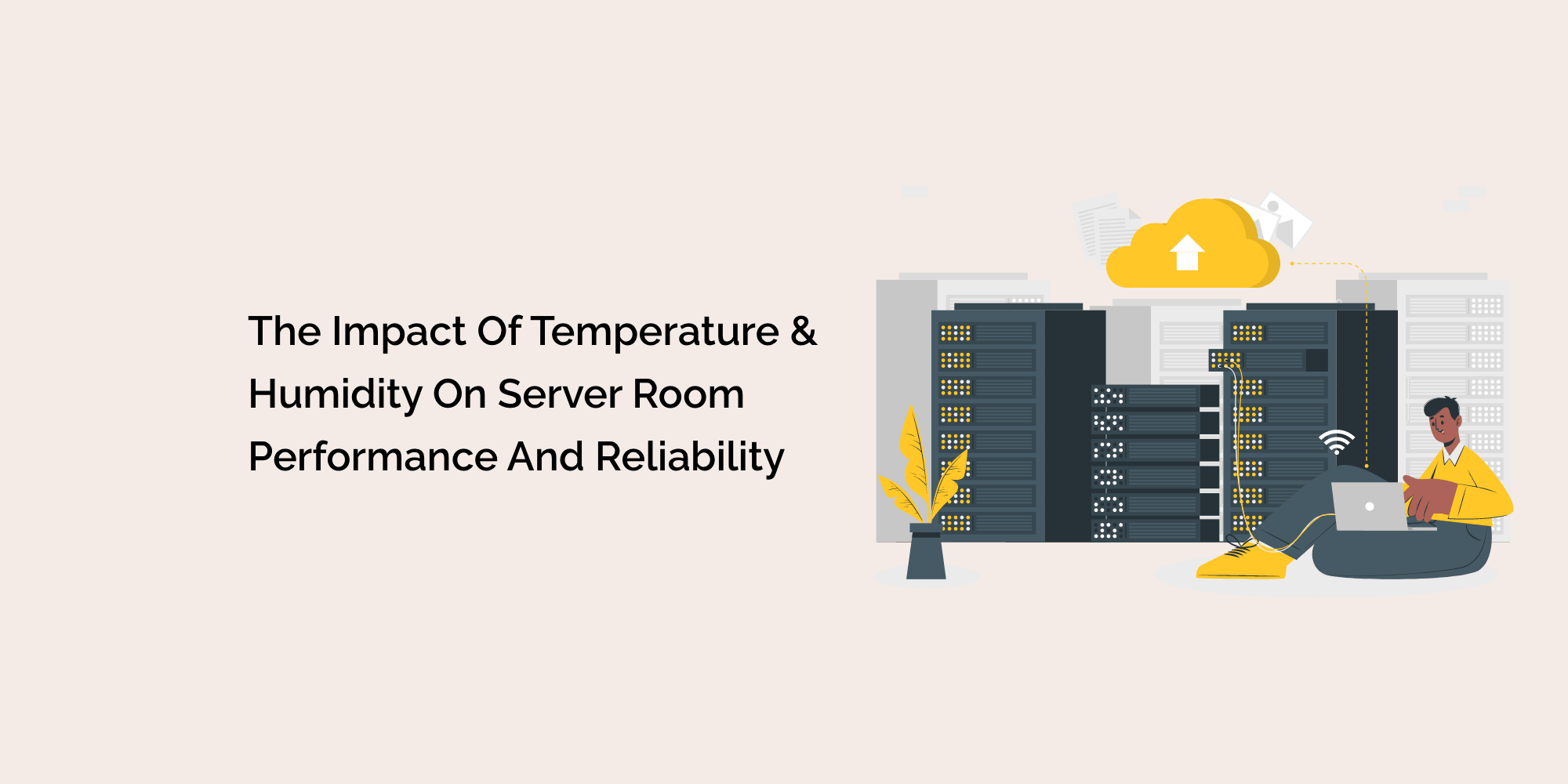The temperature and humidity levels in server rooms significantly impact the performance and reliability of critical IT infrastructure. Understanding the relationship between these environmental factors and server room conditions is crucial for maintaining optimal operational efficiency and preventing costly downtime. In this blog, we will explore the impact of temperature and humidity on server room performance and reliability, discuss the potential risks associated with imbalanced conditions, and provide insights into effective temperature and humidity control strategies. By prioritizing managing these factors, businesses can enhance server performance, prolong equipment lifespan, and ensure the continuity of their operations.
The Importance of Temperature Control
-
Optimal Temperature Range: Servers function best within a specific temperature range, typically between 18 and 27 degrees Celsius (64 and 80 degrees Fahrenheit). Operating outside this range can lead to performance degradation, hardware failures, and reduced lifespan.
-
Overheating Risks: Elevated temperatures increase the risk of overheating, causing components such as CPUs, memory modules, and hard drives to operate beyond their designed limits. Overheating can result in thermal throttling, reduced processing power, and potentially permanent damage to hardware.
- Energy Efficiency: Proper temperature control ensures energy efficiency by minimizing the workload on cooling systems. Maintaining consistent temperatures reduces the need for cooling equipment to operate at maximum capacity, resulting in lower energy consumption and reduced operational costs.
The Role of Humidity in Server Room Performance
-
Optimal Humidity Levels: The recommended humidity range for server rooms typically falls between 40% and 60% relative humidity. Maintaining proper humidity levels is essential to prevent static electricity buildup, leading to electrostatic discharge (ESD) and damage to sensitive electronic components.
-
Condensation Risks: Excessive humidity levels can cause condensation on server equipment, leading to moisture-related issues such as corrosion, short circuits, and electrical failures. Controlling humidity helps mitigate these risks and ensures the longevity of server hardware.
- Electrostatic Discharge: Low humidity levels increase the risk of electrostatic discharge, which can damage electronic components. Proper humidity control minimizes this risk, safeguarding server equipment and reducing the likelihood of unexpected failures.
Risks of Imbalanced Temperature and Humidity
-
Hardware Failures: Imbalanced temperature and humidity conditions significantly increase the risk of hardware failures. Heat stress can accelerate component aging and lead to premature failures, while excessive humidity can cause moisture-related damage or electrostatic discharge.
-
Performance Degradation: Servers operating in unfavorable environmental conditions may experience performance degradation, including reduced processing power, increased latency, and higher error rates. This can impact the overall efficiency and responsiveness of critical applications and services.
- Data Integrity and Loss: Inadequate temperature and humidity control can compromise the integrity of stored data. Uncontrolled environmental conditions can cause data corruption, rendering critical information inaccessible or leading to permanent data loss.
Effective Temperature and Humidity Control Strategies
-
Cooling Systems: Implementing an efficient cooling system is crucial for maintaining optimal temperature levels. This can include precision air conditioners, computer room air handlers, or liquid cooling solutions, depending on the scale and requirements of the server room.
-
Airflow Management: Proper airflow management ensures uniform distribution of cool air and removal of hot air. Utilize techniques such as hot aisle/cold aisle configurations, blanking panels, and optimized cable management to improve airflow and prevent hotspots.
- Humidity Control Mechanisms: Employ dehumidifiers or humidifiers to regulate humidity levels within the recommended range. Monitoring and controlling humidity help prevent condensation and mitigate the risks of static electricity and moisture-related damage.
Certainly! Here are some frequently asked questions (FAQs) related to the impact of temperature and humidity on server room performance and reliability:
How can I effectively control the temperature in my server room?
Effective temperature control can be achieved through proper cooling systems, including precision air conditioners or computer room air handlers. Implementing airflow management techniques such as hot aisle/cold aisle configurations and optimized cable management is essential to maintain consistent temperature distribution.
How can I manage humidity in my server room?
Humidity control can be achieved using dehumidifiers or humidifiers based on the specific requirements of the server room. These mechanisms help maintain humidity levels within the recommended range and prevent issues such as condensation and static electricity buildup.
How can remote monitoring help in temperature and humidity control?
Remote monitoring systems with temperature and humidity sensors provide real-time monitoring and alerts. These systems allow operators to proactively respond to deviations from optimal conditions, reducing the risk of damage or downtime.
Conclusion
Temperature and humidity profoundly impact the performance and reliability of server rooms. Inadequate control of these factors can lead to hardware failures, reduced performance, data integrity issues, and increased operational costs. By implementing effective temperature and humidity control strategies, businesses can optimize server room conditions, enhance server performance, and reduce the risk of downtime. Regular maintenance, remote monitoring, proper cooling and airflow management, and humidity control mechanisms are all crucial elements in ensuring the longevity and reliable operation of critical IT infrastructure. Prioritizing temperature and humidity control demonstrates a commitment to data integrity, business continuity, and the overall success of the organization's IT operations.








